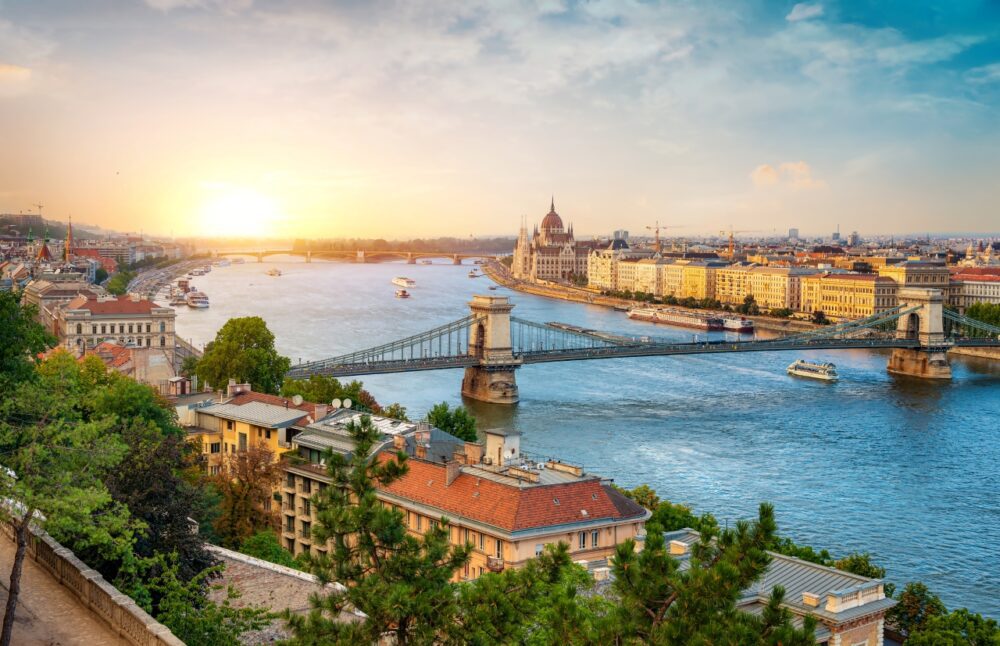
Introduction
Hungary is a country that often flies under the radar, but it’s packed with history, culture, and stunning landscapes that make it one of Europe’s hidden gems. Whether you’re strolling along the Danube in Budapest, exploring the wine regions of Eger, or relaxing in a thermal bath, Hungary offers an unforgettable blend of old-world charm and vibrant modern life. It’s a country that seamlessly mixes grand architecture with laid-back countryside, and you’ll find something special in every corner.
When I visited Hungary for the first time, I was struck by how varied it was. One moment I was standing in the shadow of Budapest’s Parliament Building, and the next I was tasting wine in a quiet village surrounded by vineyards. Hungary has a rich history, dating back to the days of the Habsburgs and Ottoman Empire, but it also feels young and dynamic, with a thriving food and music scene. Here’s why Hungary should be next on your travel list.
Table of Contents
Reasons You Should Visit Hungary
1. A Blend of Old-World Charm and Modern Vibes
Hungary is a country where history is alive and well. Budapest is filled with grand Austro-Hungarian architecture, from the Chain Bridge to the Hungarian Parliament Building, while ancient castles and medieval streets can be found throughout the country. I loved exploring Buda Castle, perched high above the city, offering sweeping views of the Danube River and Pest side.
At the same time, Hungary has a modern, youthful side. Budapest is packed with trendy cafés, bars, and the famous Ruin Pubs—abandoned buildings turned into quirky watering holes. These unique spaces blend the old and the new, and they’re the perfect spot to grab a drink and soak in the city’s vibrant atmosphere. Hungary’s mix of historic grandeur and cutting-edge creativity makes it feel both timeless and fresh.
2. Affordable and Accessible
Hungary is one of the most affordable destinations in Europe, which means you can experience top-tier cuisine, stay in beautiful hotels, and explore fantastic sights without breaking the bank. Whether you’re sipping wine in a cosy bar, enjoying a spa day in a thermal bath, or wandering through a castle, everything feels like great value.
Getting around Hungary is easy and cheap too. The country has a well-connected train network that makes it simple to travel between cities like Budapest, Debrecen, and Pécs. I found it a breeze to hop on a train for a day trip to Eger, where I toured the famous wine cellars and medieval castle. It’s a compact country, which means you can cover a lot of ground without spending too much time in transit.
3. Thermal Baths and Wellness Culture
Hungary is famous for its thermal baths, and they’re a must-do on any trip. The country sits on a network of natural hot springs, and the thermal baths are a part of Hungarian culture dating back to Roman times. One of my favourite experiences was visiting Széchenyi Baths in Budapest. This enormous complex has outdoor pools, saunas, and steam rooms, and the experience of soaking in warm water while surrounded by grand Baroque architecture was unforgettable.
Beyond Budapest, you’ll find thermal baths throughout the country, from the art deco Gellért Baths to the more relaxed baths in towns like Eger and Hévíz, near Lake Balaton. After a few days of sightseeing, nothing beats relaxing in one of these rejuvenating spas.
4. Incredible Food and Wine
Hungary’s cuisine is hearty and full of flavour, and trying the local food is one of the highlights of any visit. Goulash, the famous Hungarian stew, is a must-try, as are lángos (a fried dough topped with sour cream and cheese), and chimney cakes (sweet, spiral pastries). I couldn’t get enough of the delicious paprika-spiced dishes, especially the rich stews served in countryside taverns.
Hungary is also home to some fantastic wines, particularly in the Tokaj region, famous for its sweet dessert wine, and Eger, known for Bikavér, or Bull’s Blood, a robust red. I spent an afternoon in Eger’s Valley of the Beautiful Women, hopping between wine cellars to taste local wines. Hungarian wine is underrated but world-class, and wine lovers will be pleasantly surprised by the quality and diversity of the country’s offerings.
5. Stunning Countryside and Outdoor Adventures
Hungary isn’t just about cities—its countryside is equally stunning. From the rolling hills of Tokaj to the Danube Bend, the country’s landscapes are perfect for hiking, cycling, and exploring quaint villages. I particularly enjoyed a trip to Visegrád, where I hiked up to the Visegrád Castle and was rewarded with panoramic views over the Danube River.
If you love water sports or just want to relax by the lake, Lake Balaton, Central Europe’s largest lake, is a perfect summer destination. I spent a few days in Keszthely, a picturesque town on the lake’s western shore, enjoying boat rides, swimming, and cycling along the lakeside paths. Hungary’s natural beauty offers plenty of opportunities to escape the crowds and immerse yourself in peaceful, rural surroundings.
Best Places to Visit in Hungary
1. Budapest

Budapest is a city that captivates with its mix of old-world grandeur and modern flair. Divided by the Danube, Buda and Pest each have their own distinct character. I spent my days exploring Buda Castle, walking across the iconic Chain Bridge, and relaxing at the thermal baths. The Parliament Building, with its intricate Gothic Revival architecture, is one of the most impressive buildings I’ve ever seen.
For a different vibe, head to Pest for the ruin pubs. Szimpla Kert, the original ruin bar, is a labyrinth of eclectic rooms, quirky decor, and live music. It’s a great place to grab a drink and chat with locals. And don’t miss the Central Market Hall, where you can sample Hungarian street food and pick up some local paprika to bring home.
2. Debrecen
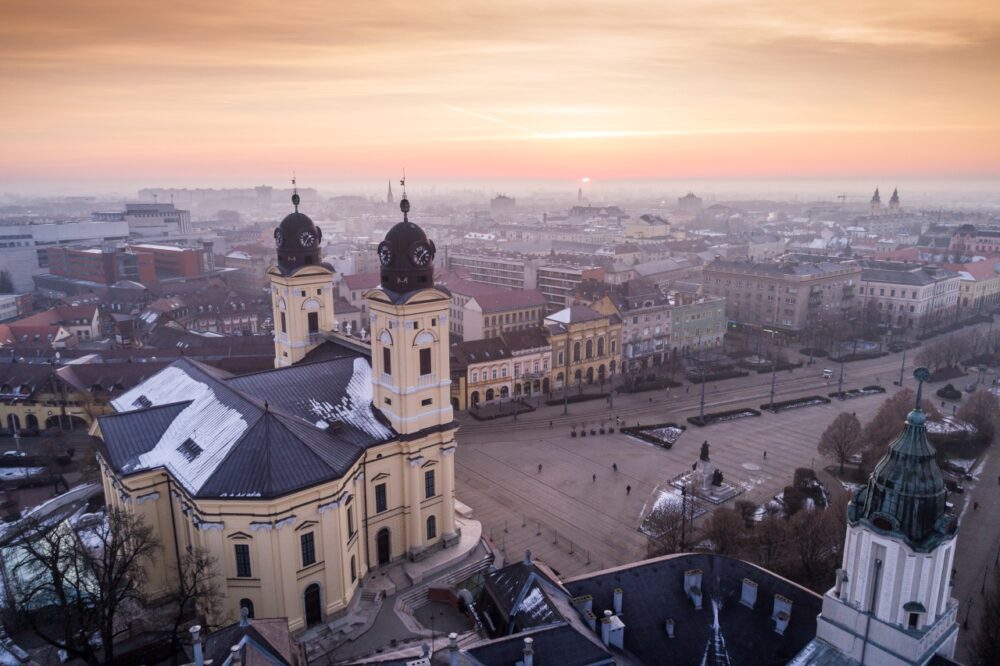
Hungary’s second-largest city, Debrecen, is known for its rich history and beautiful architecture. The city’s Great Reformed Church is a key landmark, and climbing the tower offers great views over the city. I spent some time wandering through Nagyerdei Park, a peaceful green space perfect for a relaxing afternoon.
Debrecen also has a strong cultural scene, with museums like the Déri Museum, which houses a fascinating collection of Hungarian art and artefacts. In the summer, the city comes alive with festivals, particularly the Flower Carnival, a colourful celebration with floats, performances, and live music.
3. Szeged
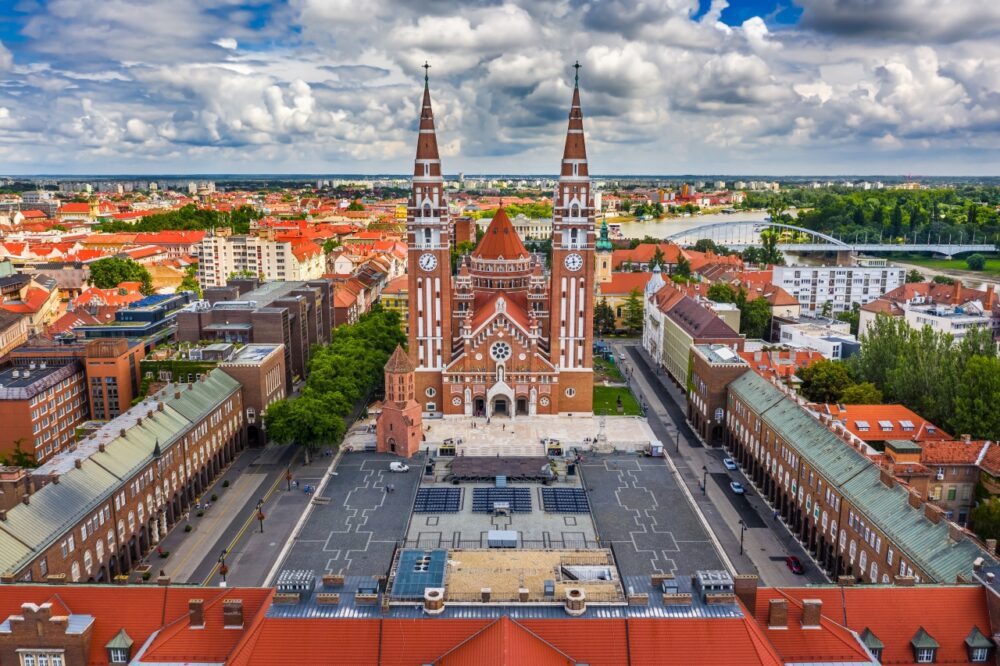
Szeged is a lively university town in the south of Hungary, known for its sunshine and stunning architecture. The Votive Church of Szeged is a must-visit, and the square around it, Dóm Square, is the perfect place to people-watch while enjoying a coffee. The city has a buzzing café culture, and its student population keeps things lively.
If you’re visiting in summer, Szeged’s Open-Air Festival is one of Hungary’s biggest cultural events, with performances held in the main square. The city is also famous for its paprika, so don’t leave without trying some of the spicy local dishes or picking up a packet of paprika to take home.
4. Pecs
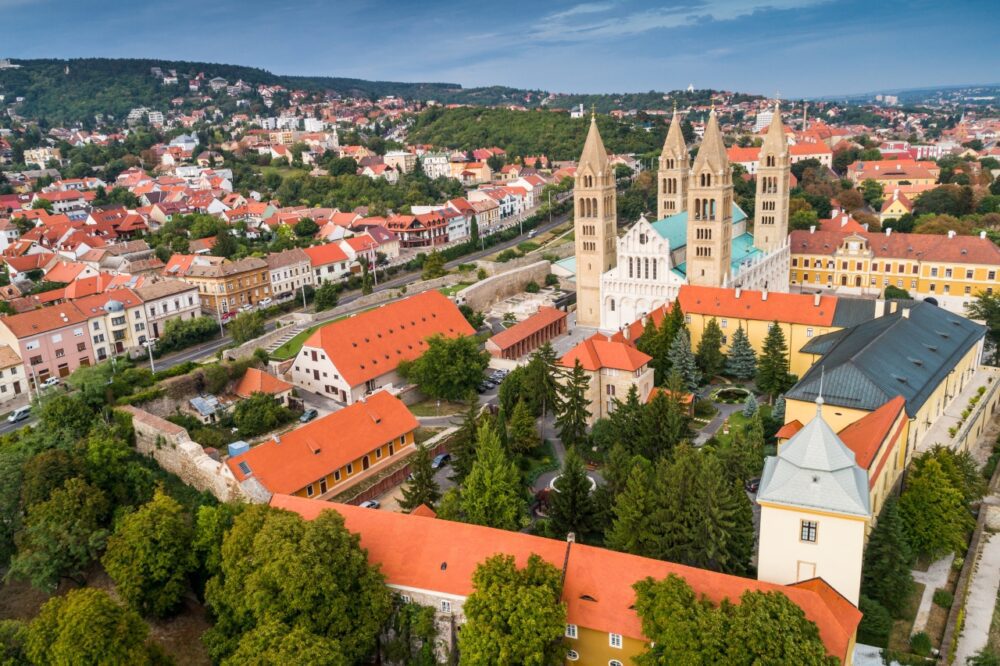
Nestled in the hills of southern Hungary, Pécs is a city of art, culture, and history. It’s famous for its early Christian burial chambers, a UNESCO World Heritage site, and its Turkish mosques, a legacy of the Ottoman period. I particularly enjoyed visiting the Pécs Cathedral, an impressive four-towered structure, and wandering through the Zsolnay Quarter, an area dedicated to art and culture.
Pécs is also known for its ceramic art, and the Zsolnay Museum showcases some of the finest pieces. The city has a laid-back, Mediterranean feel, with its sunny squares and outdoor cafés making it a perfect spot for a relaxed weekend getaway.
5. Eger
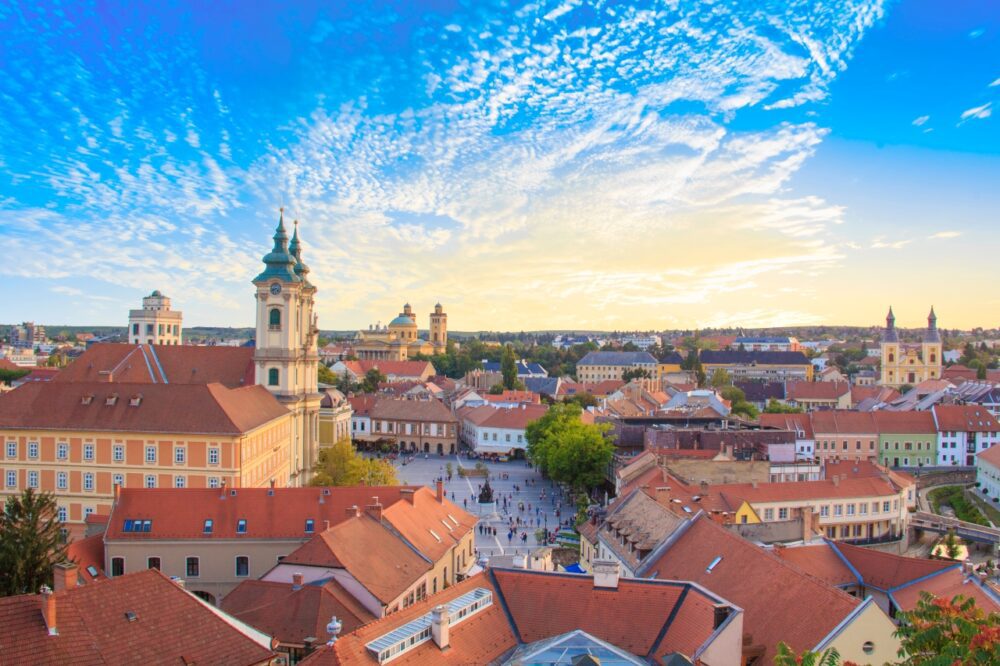
Eger, a charming town in northern Hungary, is famous for its Bikavér (Bull’s Blood) wine and its well-preserved Baroque architecture. The town’s most famous sight is Eger Castle, which played a key role in defending Hungary from Ottoman invaders. Climbing the castle’s towers gives you panoramic views over the town’s red rooftops and vineyards beyond.
One of the highlights of my trip to Eger was visiting the Valley of the Beautiful Women, a cluster of wine cellars where you can taste some of the region’s best wines. Eger’s thermal baths are also worth a visit if you want to unwind after a day of exploring.
6. Sopron
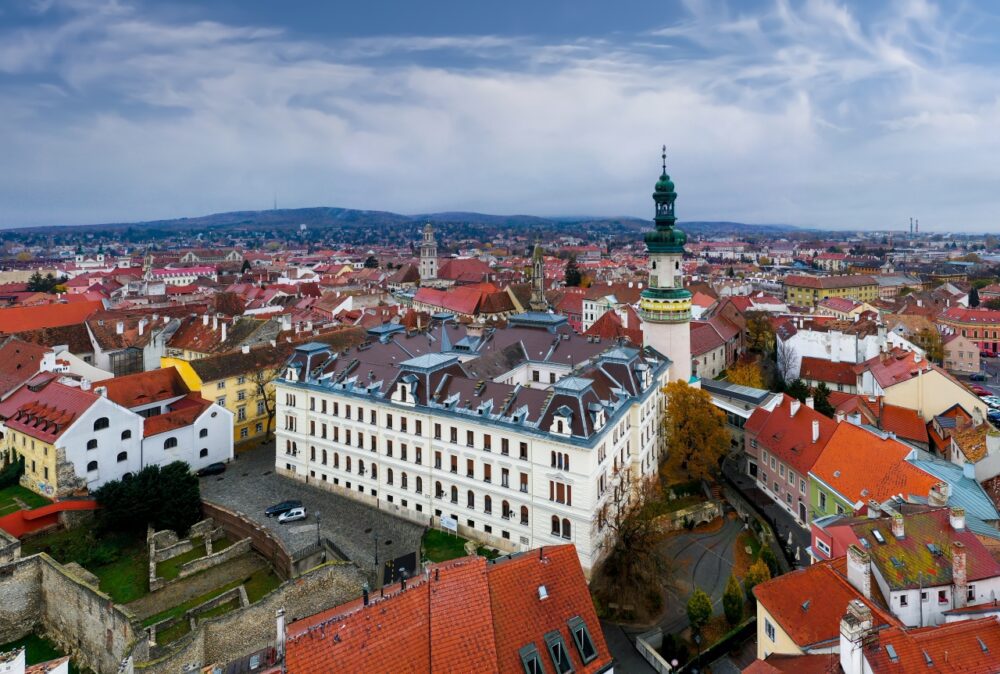
Sopron is a picturesque town near the Austrian border, known for its medieval streets and charming atmosphere. The Firewatch Tower, a symbol of the city, offers sweeping views over Sopron’s red-tiled roofs and surrounding countryside. I loved wandering through the old town, which is full of quaint cafés, shops, and historic buildings.
Sopron is also a great base for exploring the nearby Lake Neusiedl, a UNESCO-listed nature reserve that’s perfect for birdwatching, cycling, and sailing. The town’s proximity to Austria makes it an ideal stop if you’re travelling between Budapest and Vienna.
7. Kecskemet

Known for its Art Nouveau architecture, Kecskemét is a hidden gem in the heart of Hungary. The city’s main square is surrounded by colourful buildings, including the Cifra Palace, which is one of the finest examples of Hungarian Art Nouveau design. The city’s museums, including the Hungarian Museum of Photography, are small but fascinating, offering a glimpse into the country’s artistic side.
Kecskemét is also known for its fruit brandy, particularly apricot pálinka, and a visit to a local distillery is a must if you want to try this strong, traditional Hungarian spirit. The city has a relaxed, small-town feel but offers plenty to see and do for a day trip or weekend escape.
8. Gyor

Located between Budapest and Vienna, Győr is one of Hungary’s oldest cities, filled with Baroque architecture and historic charm. The Bishops’ Castle and Cathedral Basilica of Győr are impressive landmarks, and the city’s old town is a maze of cobbled streets, colourful houses, and elegant squares.
Győr’s location makes it a perfect stopover if you’re travelling between Hungary and Austria, and its thermal baths are a great place to unwind after a day of sightseeing. The city also has a lively cultural scene, with frequent festivals, concerts, and art exhibitions.
9. Keszthely
On the western shore of Lake Balaton, Keszthely is a beautiful town known for its grand Festetics Palace, one of Hungary’s most impressive stately homes. I spent an afternoon exploring the palace’s beautiful gardens and opulent rooms, learning about the history of the aristocratic family who once lived there.
Keszthely is also a great base for exploring Lake Balaton, Hungary’s largest lake. The town’s beaches and lakeside promenade are perfect for a relaxing day by the water, and there are plenty of opportunities for boat trips, water sports, and cycling along the lakeside paths.
10. Visegrad
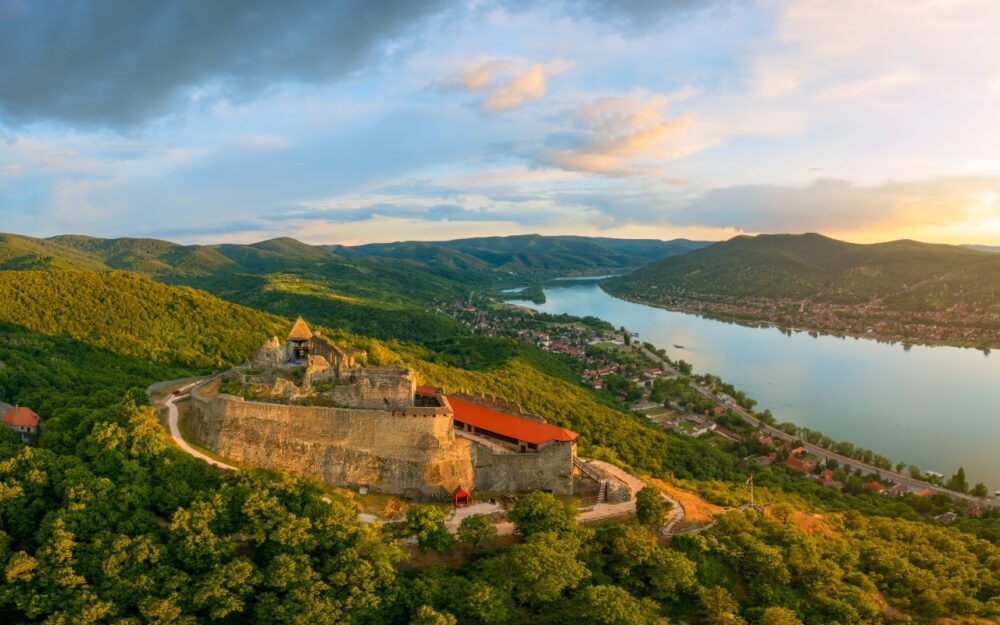
For a mix of history and nature, head to Visegrád, located along the scenic Danube Bend. The town is home to the Visegrád Castle, which offers breathtaking views over the river and the surrounding hills. I hiked up to the castle and spent time exploring the medieval fortress, learning about Hungary’s royal history.
Visegrád is a popular spot for outdoor activities like hiking, cycling, and even Danube River cruises. The nearby Royal Palace is another must-visit, offering insight into the life of Hungary’s medieval kings. It’s an easy day trip from Budapest, and the views alone make it worth the journey.
Travel Tips for Hungary
Getting Around Hungary
Hungary has a reliable and affordable public transport system, especially in cities like Budapest. The metro, trams, and buses are the easiest ways to get around the capital, while trains and buses connect the rest of the country. Trains are your best option for travelling between major cities like Budapest, Debrecen, and Szeged, while renting a car is a great option for exploring rural areas, including the Hungarian countryside and Lake Balaton. Keep in mind that some train stations and smaller towns may not have English signage, so it helps to know a few basic Hungarian phrases.
Best Time to Visit Hungary
The best time to visit Hungary is during spring (April to June) and autumn (September to October), when the weather is mild and the crowds are smaller. These seasons are ideal for sightseeing in Budapest or exploring Hungary’s wine regions. Summer (July to August) is the busiest time, especially in Budapest and around Lake Balaton, but it’s also festival season, with events like the Sziget Festival in full swing. Winter (December to February) can be cold, but it’s a great time to experience Hungary’s thermal baths and festive Christmas markets.
Passport and Visa Requirements for Hungary
Hungary is part of the Schengen Area, so travellers from EU/EEA countries can enter with just an ID card. Visitors from countries like the US, UK, Canada, and Australia can stay visa-free for up to 90 days within the Schengen Zone. Make sure your passport is valid for at least three months beyond your planned stay. If you’re planning to travel to neighbouring countries, check their entry requirements, as border checks can still apply at non-Schengen borders.
Currency and Banks in Hungary
Hungary uses the Hungarian Forint (HUF), not the euro, though some hotels and tourist spots in Budapest may accept euros. Credit cards are widely accepted in cities, but in smaller towns or markets, cash is preferred. ATMs are readily available in most areas, but it’s a good idea to carry some forints, especially for public transport, tipping, and smaller purchases. Be aware that exchange rates at airports or tourist areas might not be the best—using an ATM or exchanging money at a bank is usually a better option.
Language and Useful Phrases to Know
Hungarian, or Magyar, is the official language in Hungary, and while English is widely spoken in tourist areas, especially in Budapest, it’s helpful to learn a few basic Hungarian phrases. Try “Szia” (hello), “Köszönöm” (thank you), and “Viszontlátásra” (goodbye) to break the ice. In rural areas, English is less common, so having some Hungarian phrases ready will make interactions much easier and appreciated by locals.
Budgeting and Costs for Hungary
Hungary is more affordable than many Western European countries, making it a great destination for budget-conscious travellers. You’ll find reasonably priced accommodation, food, and activities, particularly outside the peak summer season. Dining at local étkezde (simple eateries) offers delicious Hungarian dishes at a fraction of the price of tourist restaurants. Public transport is also inexpensive, especially in Budapest. To save on attractions, consider purchasing a Budapest Card, which offers free or discounted entry to museums, public transport, and thermal baths.
Conclusion
Hungary is a country that offers something for every traveller, from the vibrant streets of Budapest to the rolling vineyards of Eger and the relaxing waters of Lake Balaton. Whether you’re exploring historic castles, soaking in thermal baths, or enjoying a glass of local wine, Hungary’s rich culture, friendly people, and beautiful landscapes will leave you wanting more.
What I love most about Hungary is how it balances its deep history with a youthful energy—whether in the form of its lively café culture or its world-class festivals. It’s a country that invites you to slow down, savour the food and wine, and take in the beauty of its towns and countryside. If you’re looking for a destination that offers both adventure and relaxation, Hungary should be at the top of your travel list. Trust me—you’ll be planning your return trip before you’ve even left.
